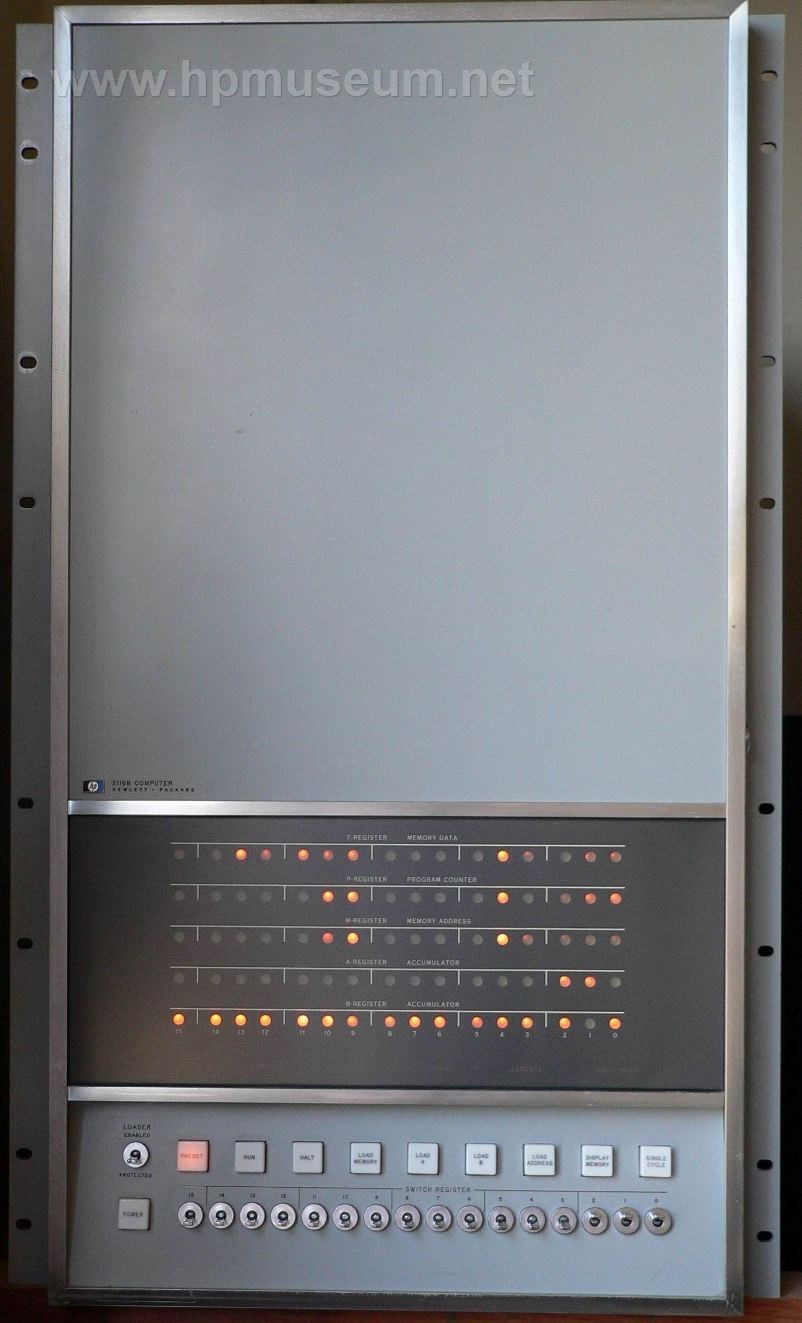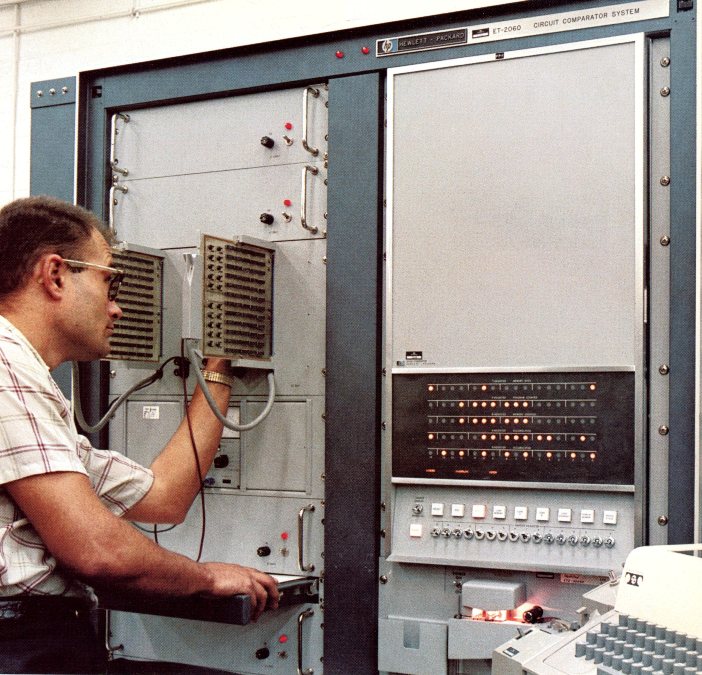Computer Systems
 | Early 2000 Selection: |
| Name: 2116 | |
| Product Number: 2116 | |
| Introduced: 1966 | |
| Division: Dymec | |
| Ad: Click to see | |
| Original Price: $22000 | |
| Catalog Reference: 1967, page 88 | |
| Donated by: Sheila Isaacs, Shoreham New York (2116A) |
Description:
Guest Exhibit Photos (2116B) Provided By: Robert Garner, San Jose California.
Design and development of the 2116A was completed in a single year - lightning speed by product development cycle standards of the day (and also a good case study of effective organisational structures). This new computer was accompanied by a full suite of software at introduction, also very unusual for the time. The 2116A could be programmed in either FORTRAN or assembly language. The 2116A was the industry's second 16-bit minicomputer (Computer Control Company's DDP 116 introduced in April, 1965 was the first).
The 2116A featured a large cabinet with 16 expansion slots for connection to HP instruments. Most computers of the day required controlled environmental conditions in which to operate. By contrast, the 2116A was designed to operate in temperatures up to 55 degrees Celsius and in relative humidity up to 95%. Each 2116A computer ran
extensive diagnostic tests inside an environmental chamber. The machine had to run
error free for 60 hours with both the temperature and humidity changing
every few hours. If a computer failed, the technician would remove it from
the chamber, take it back to his work station and repair it. The computer was then put back
into the chamber and the clock was reset to zero. Some computers were in
the chamber for over a week before being sent to final quality control. When the
chamber was on the high humidity cycle, you could wipe your hand across
the top of the cabinet and it would be dripping wet. The environmental
chamber held only the 2116A computer box and nothing else (Fred Allard). It was
capable of holding approximately 15 computers at one time. The 2116A was much smaller than most computers of the time because it was designed with the new integrated circuit technology. Memory technology was magnetic core. The 2116A came standard with 4096-word memory, expandable to 8192-word (and up to 16384-word with the accessory memory extender). The 2116B came standard with 8192-word memory, expandable to 32768-word with the external extender). In its first year of production, only five 2116A computers were sold outside of HP, all by Dick Slocum in the Eastern Sales Region. We have one of these original units in our collection.
At the
beginning of 1970, HP decided to build its own core stack memory, rather than to continue to OEM this component from Ampex. HP's Fred Allard
had previously worked for Ampex Memory Core Division in West Los
Angeles and was asked to help with the implementation of building the first HP
memory. The objective was to incorporate the 8K core stack onto the plug-in circuit board with its integrated circuitry surrounding it. It was common in
those days to use 22 mil cores in memory stacks with four wires running
through each core. To gain core switching speed, HP decided to use 18 mil
cores in the stacks. This presented another problem because four wires will not fit inside an 18 mil core. The inside diameter of the core was too small. HP
solved this by using only three wires through every core. The fact that one of
the wires (the sense wire) could also be used as an inhibit wire made this possible. The 2116C incorporated these new plug-in core memory modules, the same modules used in the 2100 computer.
Click here for a video on our 2116A, restored by David Collins in celebration of her 50th birthday.
Click here for a detailed look at the origins of the 2116.
Click here for detailed information on the hardware configurations of the A, B and C models.
Click here to review Tim Riker's progress in refurbishing a 2116A.

| Back | More Images | Product Documentation | Category Accessories |
^ TOP©2004 - 2025 BGImages Australia - All Rights Reserved.
The HP Computer Museum and BGImages Australia are not affiliated with HP Inc. or with Hewlett Packard Enterprise. Hewlett Packard and the HP logo are trademarks of HP Inc and Hewlett Packard Enterprise. This website is intended solely for research and education purposes.
